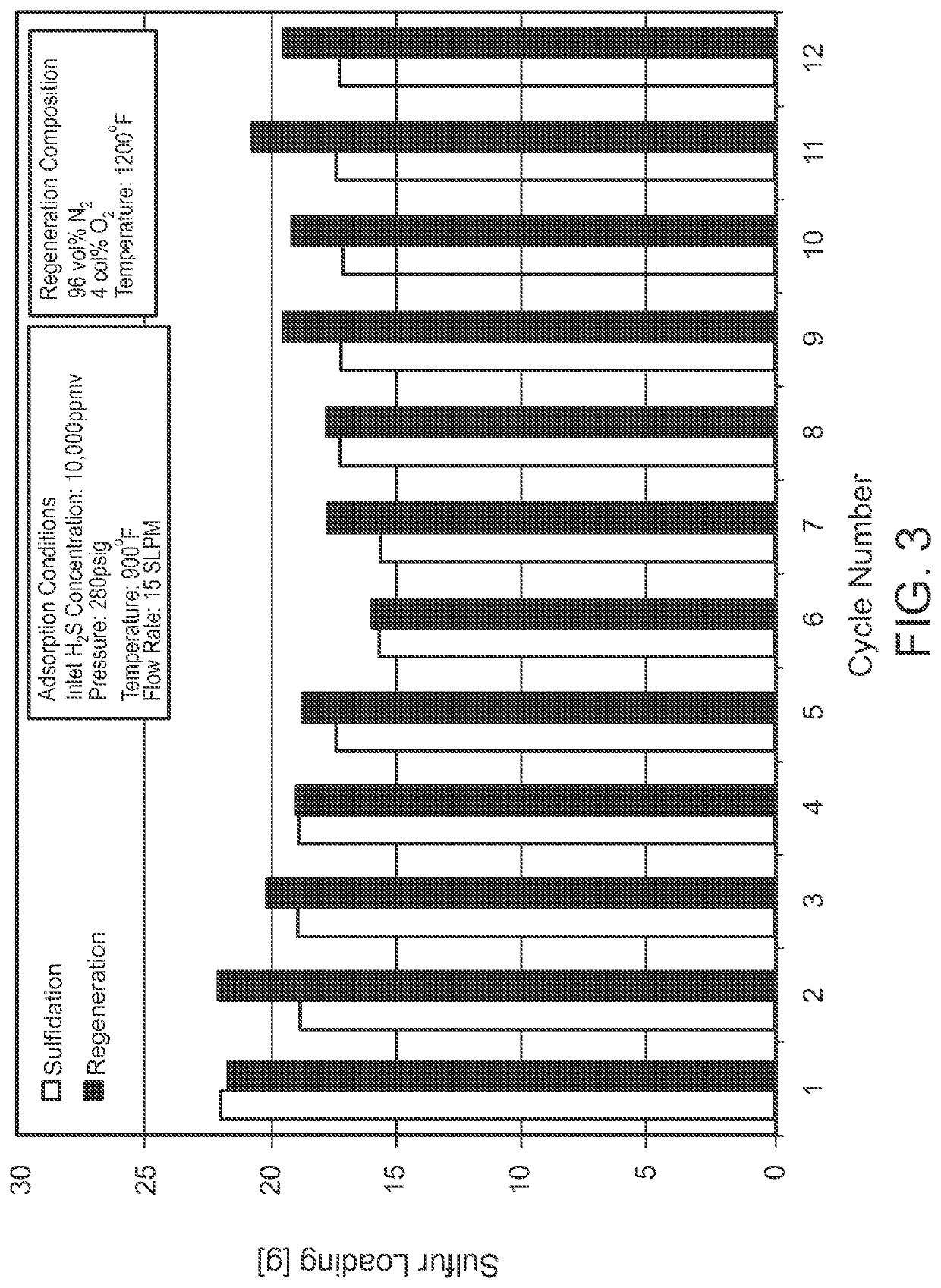Zinc oxide based sorbent and process for preparing same
a sorbent and zinc oxide technology, applied in the direction of physical/chemical process catalysts, other chemical processes, separation processes, etc., to achieve the effects of enhancing temperature control of the overall process, high bulk density, and high feed stream throughpu
- Summary
- Abstract
- Description
- Claims
- Application Information
AI Technical Summary
Benefits of technology
Problems solved by technology
Method used
Image
Examples
Embodiment Construction
[0032]In the following detailed description, preferred embodiments of the disclosure are described to enable practice of the disclosure. Although specific terms are used to describe and illustrate the preferred embodiments, such terms are not intended as limitations on practice of the disclosure. Moreover, although the disclosure is described with reference to the preferred embodiments, numerous variations and modifications of the disclosure will be apparent to those of skill in the art upon consideration of the foregoing, together with the following detailed description.
[0033]As indicated previously, the sorbent compositions of the disclosure can optionally include, in combination with the active zinc oxide-based sorbent component, promoter components and chemically inert components (the latter including components that may exhibit measurable but only minimal chemical activity), in amounts of up to 25 wt %, based on the total weight of the sorbent, preferably less than 20 wt %, mor...
PUM
| Property | Measurement | Unit |
|---|---|---|
| crystallite size | aaaaa | aaaaa |
| size | aaaaa | aaaaa |
| size | aaaaa | aaaaa |
Abstract
Description
Claims
Application Information
 Login to View More
Login to View More - R&D
- Intellectual Property
- Life Sciences
- Materials
- Tech Scout
- Unparalleled Data Quality
- Higher Quality Content
- 60% Fewer Hallucinations
Browse by: Latest US Patents, China's latest patents, Technical Efficacy Thesaurus, Application Domain, Technology Topic, Popular Technical Reports.
© 2025 PatSnap. All rights reserved.Legal|Privacy policy|Modern Slavery Act Transparency Statement|Sitemap|About US| Contact US: help@patsnap.com



